India Electric Bus Market Size
| Icons | Lable | Value |
|---|---|---|
|
|
Study Period | 2017 - 2030 |
|
|
Market Size (2024) | USD 0.86 Billion |
|
|
Market Size (2030) | USD 2.83 Billion |
|
|
Largest Share by Fuel Category | BEV |
|
|
CAGR (2024 - 2030) | 21.89 % |
|
|
Fastest Growing by Fuel Category | FCEV |
Major Players |
||
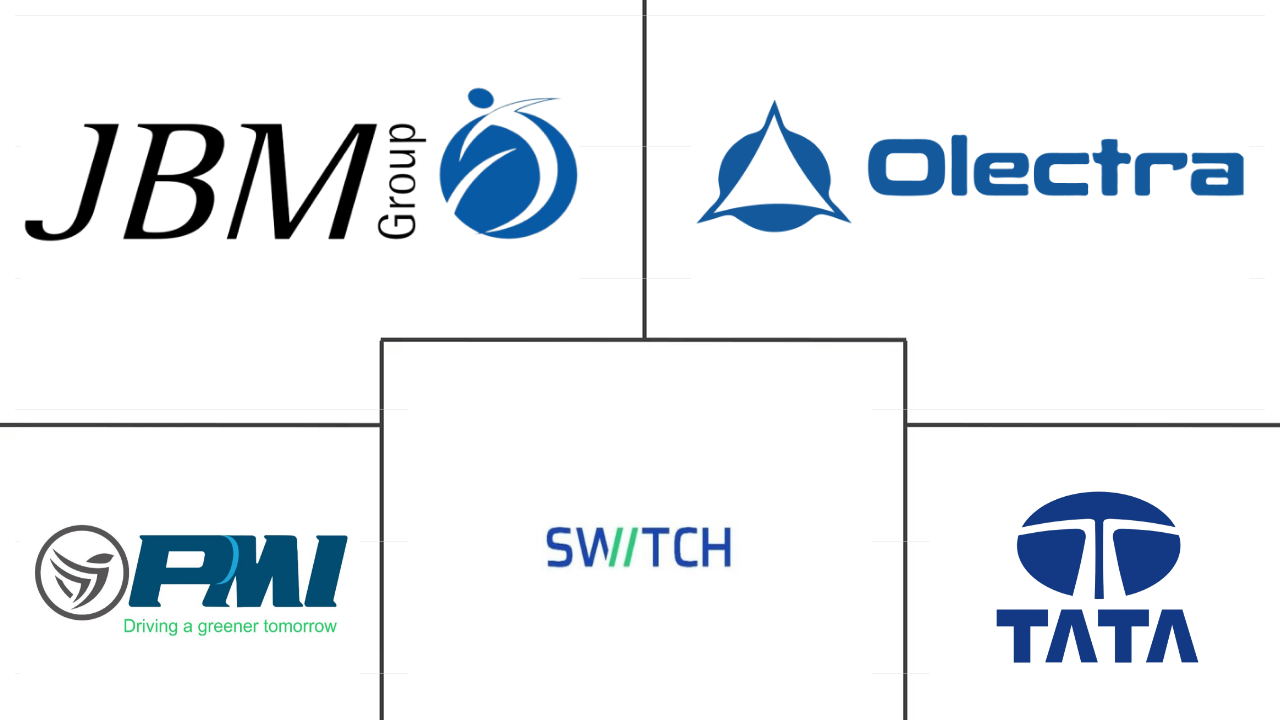
|
||
|
*Disclaimer: Major Players sorted in alphabetical order. |
India Electric Bus Market Analysis
The India Electric Bus Market size is estimated at 0.86 billion USD in 2024, and is expected to reach 2.83 billion USD by 2030, growing at a CAGR of 21.89% during the forecast period (2024-2030).
0.86 Billion
Market Size in 2024 (USD)
2.83 Billion
Market Size in 2030 (USD)
157.54 %
CAGR (2017-2023)
21.89 %
CAGR (2024-2030)
Largest Segment by Fuel Category
99.88 %
value share, BEV, 2023
BEVs dominate India's electric bus market due to government incentives, lower operational costs, reduced emissions, and growing urban demand for cleaner public transportation options.
Leading Market Player
43.92 %
market share, Tata Motors Limited, 2023
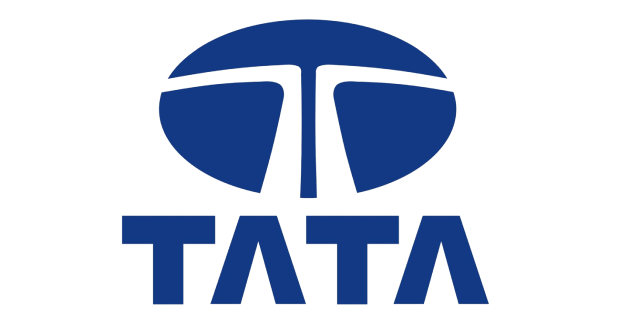
Tata Motors Limited dominates the market with its extensive electric bus portfolio, strong manufacturing capabilities, and leadership in providing eco-friendly public transportation solutions across India.
Second leading Market Player
11.45 %
market share, Olectra Greentech Ltd., 2023
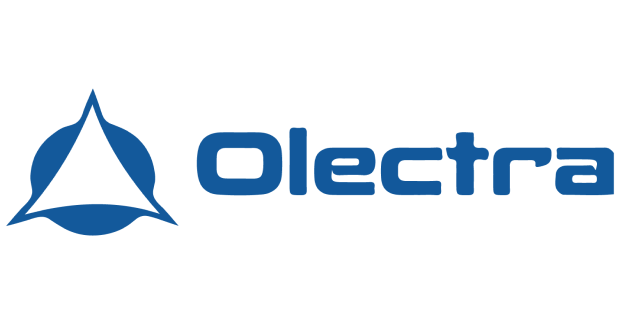
Olectra is the second leading player in the electric bus market in India. Its success can be attributed to its experience in the electric vehicle industry, diverse product portfolio.
Third Leading Market Player
9.70 %
market share, PMI Electro Mobility Solutions Pvt. Ltd., 2023
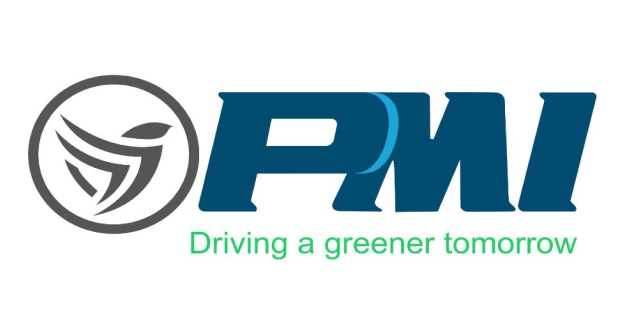
PMI Electro Mobility Solutions Pvt. Ltd. is a key player due to its focus on electric bus manufacturing, strong partnerships with state transport authorities, and commitment to sustainable urban mobility.
Fourth Leading Market Player
8.65 %
market share, JBM Auto Limited, 2023
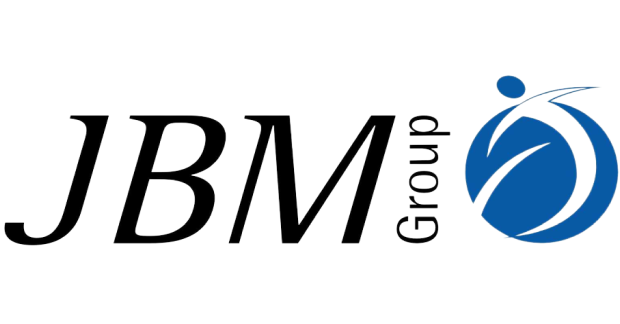
JBM products like the JBM ECOLIFE and JBM GALAXY are designed for high efficiency and low total cost of ownership, making them attractive to public transport systems.
India's electric bus market is expanding, supported by policies and investment in charging infrastructure for sustainable public transport
- India's electric bus market is witnessing a robust growth trajectory, propelled by a blend of national and subnational policies aimed at facilitating the shift towards electric mobility. At the national level, India has displayed a resolute commitment to electrify its public transportation, with substantial funding earmarked for charging infrastructure. This endeavor aligns with a broader strategy to curtail reliance on fossil fuels and slash carbon emissions in the transport domain. Moreover, at the subnational level, targeted goals have been set to incentivize the adoption of electric buses. For instance, the government of Tamil Nadu unveiled plans to incentivize 750 charging stations under its State EV policy and aspires for 30% of its bus fleet to be electric by 2030. These policies underscore a clear intent to seamlessly integrate electric buses into the public transit network, bolstering the sustainability and efficacy of urban mobility in India.
- The backing for electric buses in India is further substantiated by resource allocation and the establishment of definitive electrification targets. The emphasis on building requisite charging infrastructure and setting ambitious benchmarks for electric bus uptake underscore the government's multifaceted approach to tackle both the environmental and logistical hurdles of urban transport. By prioritizing bus electrification, India not only aims to curtail greenhouse gas emissions but also enhance air quality in its rapidly urbanizing cities. The unwavering commitment, both at the national and subnational levels, to promote electric buses through financial support, infrastructure development, and policy frameworks, reflects a comprehensive endeavor to foster sustainable transport solutions.
India Electric Bus Market Trends
Government initiatives and stringent norms drive rapid growth in the electric vehicle market in India
- India's electric vehicle (EV) market is in a growth phase, with the government actively formulating strategies to combat pollution. The Fame India scheme, launched in 2015, has played a pivotal role in driving vehicle electrification. Building on its success, Fame Phase 2, active till April 2022, further bolstered EV sales, especially in 2021, with the government offering subsidies like INR 10,000 grants for electric cars with battery capacities up to 15 kWh.
- State governments across India are increasingly incorporating electric buses into their fleets, aiming to transition from internal combustion engine (ICE) buses. This move not only cuts operational costs but also curbs carbon emissions and improves air quality. In a notable move, the Delhi government greenlit the procurement of 300 new low-floor electric (AC) buses in March 2021, with 100 of them hitting the roads in January 2022. These initiatives contributed to a significant 62.58% surge in demand for electric commercial vehicles in India in 2022 over 2021.
- The demand for electric cars has surged in recent times, driven by the government's introduction of stringent norms. In August 2021, the Indian government unveiled the Vehicle Scrappage Policy, targeting the phasing out of polluting and unfit vehicles, irrespective of their age. This policy, set to be implemented by 2024, is steering consumers toward electric cars. Additionally, the government has set an ambitious target of having 30% of all cars in India electrified by 2030. These initiatives are poised to propel electric car sales during the 2024-2030 period in India.
OTHER KEY INDUSTRY TRENDS COVERED IN THE REPORT
- India's population, driven by factors like a young demographic and improved healthcare, is projected to reach 1,522.77 million by 2030, reflecting steady growth
- The consumer spending for vehicle purchases in Asia-Pacific, as exemplified by India, shows signs of cautious optimism during 2022-2023, following a period of volatility
- India's auto interest rates have shown a consistent downward trend, driven by RBI's measures and evolving lending practices
- India's electric vehicle charging station market surges with 6,800 slow charging and 4,100 fast charging stations in 2022
- Various new entries and new product launches may accelerate the battery pack market in India
- From 2022 to 2023, Mahindra & Mahindra and Tata Motors led India's commercial vehicles sector, with Isuzu showing significant growth; Force Motors and Eicher Motors face challenges due to recent declines
- India's GDP per capita is expected to sustain growth, reaching USD 4,205.47 by 2030
- India's journey toward lower inflation sets the stage for economic resilience and investor confidence
- The combined revenue from shared rides in India is expected to rise consistently driven by factors like technological advancements, urbanization, and shifting consumer preferences
- Electric vehicle sales in India increased because of the falling battery prices and government incentives
- The numerous tax hikes in the country were expected to increase fuel prices in 2023
India Electric Bus Industry Overview
The India Electric Bus Market is fairly consolidated, with the top five companies occupying 79.05%. The major players in this market are JBM Auto Limited, Olectra Greentech Ltd., PMI Electro Mobility Solutions Pvt. Ltd., Switch Mobility (Ashok Leyland Limited) and Tata Motors Limited (sorted alphabetically).
India Electric Bus Market Leaders
JBM Auto Limited
Olectra Greentech Ltd.
PMI Electro Mobility Solutions Pvt. Ltd.
Switch Mobility (Ashok Leyland Limited)
Tata Motors Limited
Other important companies include Eicher Motors Ltd., Solaris Bus & Coach S.A., VE Commercial Vehicles Limited, Volvo Buses India Private Limited.
*Disclaimer: Major Players sorted in alphabetical order.
India Electric Bus Market News
- September 2023: Tata Motors announced that it supplied 400 Starbus EV buses to the Delhi Transport Corporation (DTC), via its subsidiary TML CV Mobility Solutions Ltd, as a part of its larger order from DTC to supply, maintain, and operate 1,500 low-floor, air-conditioned electric buses for a period 12-years.
- August 2023: Ve Commercial Vehicles Limited announced that it has received an order for 550 Intercity Buses from Vijayan Travels and VT, worth INR 5 billion. The order includes 500 Eicher Intercity 13.5m AC and non AC sleeper coaches and 50 Volvo 9600 luxury sleeper coaches.
- July 2023: Tata Motors, India filed 158 Patents in FY 2022-23, R&D spend reaches INR 202.65 billion
Free with this Report
For the Vehicle Hub report, we provide an extensive collection of over 150 free charts, delivering detailed insights on regional and country-level dynamics within the vehicle industry. This encompasses in-depth analyses of vehicle registrations, usage patterns in both consumer and business segments, and evaluations of various vehicle configurations and body types. The report delves into critical industrial trends such as shifts in vehicle production and distribution centers, changes in vehicle ownership costs, and advancements in automotive technologies. Further, our report offers comprehensive market segmentation by vehicle type, body type, propulsion, and fuel categories, providing a nuanced understanding of the market landscape. It also explores the adoption rate of new technologies, the impact of regulatory changes, and the influence of economic factors on the vehicle market. We include a thorough examination of key industry players, regulatory frameworks, and market size in terms of both revenue and unit sales, leading to strategic projections and forecasts that account for emerging trends and potential shifts in the industry.
India Electric Bus Market Report - Table of Contents
EXECUTIVE SUMMARY & KEY FINDINGS
REPORT OFFERS
1. INTRODUCTION
1.1. Study Assumptions & Market Definition
1.2. Scope of the Study
1.3. Research Methodology
2. KEY INDUSTRY TRENDS
2.1. Population
2.2. GDP Per Capita
2.3. Consumer Spending For Vehicle Purchase (cvp)
2.4. Inflation
2.5. Interest Rate For Auto Loans
2.6. Shared Rides
2.7. Impact Of Electrification
2.8. EV Charging Station
2.9. Battery Pack Price
2.10. New Xev Models Announced
2.11. Fuel Price
2.12. Oem-wise Production Statistics
2.13. Regulatory Framework
2.14. Value Chain & Distribution Channel Analysis
3. MARKET SEGMENTATION (includes market size in Value in USD and Volume, Forecasts up to 2030 and analysis of growth prospects)
3.1. Fuel Category
3.1.1. BEV
3.1.2. FCEV
3.1.3. HEV
3.1.4. PHEV
4. COMPETITIVE LANDSCAPE
4.1. Key Strategic Moves
4.2. Market Share Analysis
4.3. Company Landscape
4.4. Company Profiles
4.4.1. Eicher Motors Ltd.
4.4.2. JBM Auto Limited
4.4.3. Olectra Greentech Ltd.
4.4.4. PMI Electro Mobility Solutions Pvt. Ltd.
4.4.5. Solaris Bus & Coach S.A.
4.4.6. Switch Mobility (Ashok Leyland Limited)
4.4.7. Tata Motors Limited
4.4.8. VE Commercial Vehicles Limited
4.4.9. Volvo Buses India Private Limited
5. KEY STRATEGIC QUESTIONS FOR VEHICLES CEOS
6. APPENDIX
6.1. Global Overview
6.1.1. Overview
6.1.2. Porter’s Five Forces Framework
6.1.3. Global Value Chain Analysis
6.1.4. Market Dynamics (DROs)
6.2. Sources & References
6.3. List of Tables & Figures
6.4. Primary Insights
6.5. Data Pack
6.6. Glossary of Terms
List of Tables & Figures
- Figure 1:
- INDIA ELECTRIC BUS MARKET, POPULATION YOY GROWTH RATE, UNITS, 2017 - 2030
- Figure 2:
- INDIA MARKET, UNDEFINED YOY GROWTH RATE, 2017 - 2030
- Figure 3:
- INDIA MARKET, UNDEFINED YOY GROWTH RATE, 2017 - 2030
- Figure 4:
- INDIA MARKET, UNDEFINED YOY GROWTH RATE, 2017 - 2030
- Figure 5:
- INDIA ELECTRIC BUS MARKET, INTEREST RATE FOR AUTO LOANS YOY GROWTH RATE, PERCENTAGE, 2017 - 2022
- Figure 6:
- INDIA MARKET, UNDEFINED YOY GROWTH RATE, 2017 - 2030
- Figure 7:
- INDIA MARKET, UNDEFINED YOY GROWTH RATE, 2017 - 2030
- Figure 8:
- INDIA MARKET, UNDEFINED YOY GROWTH RATE, 2017 - 2022
- Figure 9:
- INDIA MARKET, UNDEFINED YOY GROWTH RATE, 2017 - 2030
- Figure 10:
- INDIA ELECTRIC BUS MARKET, NEW XEV MODELS ANNOUNCED, VOLUME, YOY GROWTH RATE, UNITS, 2023 - 2027
- Figure 11:
- INDIA MARKET, UNDEFINED YOY GROWTH RATE, 2017 - 2022
- Figure 12:
- INDIA MARKET, UNDEFINED YOY GROWTH RATE, 2017 - 2022
- Figure 13:
- INDIA ELECTRIC BUS MARKET, VOLUME IN UNITS, 2017 - 2030
- Figure 14:
- INDIA ELECTRIC BUS MARKET, VALUE IN USD, 2017 - 2030
- Figure 15:
- INDIA ELECTRIC BUS MARKET, BY FUEL CATEGORY, BY VOLUME IN UNITS, 2017 - 2030
- Figure 16:
- INDIA ELECTRIC BUS MARKET, BY FUEL CATEGORY, BY VALUE IN USD, 2017 - 2030
- Figure 17:
- INDIA ELECTRIC BUS MARKET MARKET, SHARE(%), BY FUEL CATEGORY, 2017 - 2030
- Figure 18:
- INDIA ELECTRIC BUS MARKET MARKET, SHARE(%), BY FUEL CATEGORY, 2017 - 2030
- Figure 19:
- INDIA ELECTRIC BUS MARKET, BY BEV, BY VOLUME IN UNITS, 2017 - 2030
- Figure 20:
- INDIA ELECTRIC BUS MARKET, BY BEV, BY VALUE IN USD, 2017 - 2030
- Figure 21:
- INDIA ELECTRIC BUS MARKET MARKET, SHARE(%), BY FUEL CATEGORY, 2017 - 2030
- Figure 22:
- INDIA ELECTRIC BUS MARKET, BY FCEV, BY VOLUME IN UNITS, 2017 - 2030
- Figure 23:
- INDIA ELECTRIC BUS MARKET, BY FCEV, BY VALUE IN USD, 2017 - 2030
- Figure 24:
- INDIA ELECTRIC BUS MARKET MARKET, SHARE(%), BY FUEL CATEGORY, 2017 - 2030
- Figure 25:
- INDIA ELECTRIC BUS MARKET, BY HEV, BY VOLUME IN UNITS, 2017 - 2030
- Figure 26:
- INDIA ELECTRIC BUS MARKET, BY HEV, BY VALUE IN USD, 2017 - 2030
- Figure 27:
- INDIA ELECTRIC BUS MARKET MARKET, SHARE(%), BY FUEL CATEGORY, 2017 - 2030
- Figure 28:
- INDIA ELECTRIC BUS MARKET, BY PHEV, BY VOLUME IN UNITS, 2017 - 2030
- Figure 29:
- INDIA ELECTRIC BUS MARKET, BY PHEV, BY VALUE IN USD, 2017 - 2030
- Figure 30:
- INDIA ELECTRIC BUS MARKET MARKET, SHARE(%), BY FUEL CATEGORY, 2017 - 2030
- Figure 31:
- INDIA ELECTRIC BUS MARKET, MOST ACTIVE COMPANIES, BY NUMBER OF STRATEGIC MOVES, 2017 - 2030
- Figure 32:
- INDIA ELECTRIC BUS MARKET, MOST ADOPTED STRATEGIES, 2017 - 2030
- Figure 33:
- INDIA ELECTRIC BUS MARKET SHARE(%), BY MAJOR PLAYERS, 2021
India Electric Bus Industry Segmentation
BEV, FCEV, HEV, PHEV are covered as segments by Fuel Category.
- India's electric bus market is witnessing a robust growth trajectory, propelled by a blend of national and subnational policies aimed at facilitating the shift towards electric mobility. At the national level, India has displayed a resolute commitment to electrify its public transportation, with substantial funding earmarked for charging infrastructure. This endeavor aligns with a broader strategy to curtail reliance on fossil fuels and slash carbon emissions in the transport domain. Moreover, at the subnational level, targeted goals have been set to incentivize the adoption of electric buses. For instance, the government of Tamil Nadu unveiled plans to incentivize 750 charging stations under its State EV policy and aspires for 30% of its bus fleet to be electric by 2030. These policies underscore a clear intent to seamlessly integrate electric buses into the public transit network, bolstering the sustainability and efficacy of urban mobility in India.
- The backing for electric buses in India is further substantiated by resource allocation and the establishment of definitive electrification targets. The emphasis on building requisite charging infrastructure and setting ambitious benchmarks for electric bus uptake underscore the government's multifaceted approach to tackle both the environmental and logistical hurdles of urban transport. By prioritizing bus electrification, India not only aims to curtail greenhouse gas emissions but also enhance air quality in its rapidly urbanizing cities. The unwavering commitment, both at the national and subnational levels, to promote electric buses through financial support, infrastructure development, and policy frameworks, reflects a comprehensive endeavor to foster sustainable transport solutions.
| Fuel Category | |
| BEV | |
| FCEV | |
| HEV | |
| PHEV |
Market Definition
- Vehicle Type - The category includes Medium and Heavy Duty Buses.
- Vehicle Body Type - This include Bus category.
- Fuel Category - The category exclusively covers electric propulsion systems, including various types such as HEV (Hybrid Electric Vehicles), PHEV (Plug-in Hybrid Electric Vehicles), BEV (Battery Electric Vehicles), and FCEV (Fuel Cell Electric Vehicles).
| Keyword | Definition |
|---|---|
| Electric Vehicle (EV) | A vehicle which uses one or more electric motors for propulsion. Includes cars, buses, and trucks. This term includes all-electric vehicles or battery electric vehicles and plug-in hybrid electric vehicles. |
| BEV | A BEV relies completely on a battery and a motor for propulsion. The battery in the vehicle must be charged by plugging it into an outlet or public charging station. BEVs do not have an ICE and hence are pollution-free. They have a low cost of operation and reduced engine noise as compared to conventional fuel engines. However, they have a shorter range and higher prices than their equivalent gasoline models. |
| PEV | A plug-in electric vehicle is an electric vehicle that can be externally charged and generally includes all-electric vehicles as well as plug-in hybrids. |
| Plug-in Hybrid EV | A vehicle that can be powered either by an ICE or an electric motor. In contrast to normal hybrid EVs, they can be charged externally. |
| Internal combustion engine | An engine in which the burning of fuels occurs in a confined space called a combustion chamber. Usually run with gasoline/petrol or diesel. |
| Hybrid EV | A vehicle powered by an ICE in combination with one or more electric motors that use energy stored in batteries. These are continually recharged with power from the ICE and regenerative braking. |
| Commercial Vehicles | Commercial vehicles are motorized road vehicles designed for transporting people or goods. The category includes light commercial vehicles (LCVs) and medium and heavy-duty vehicles (M&HCV). |
| Passenger Vehicles | Passenger cars are electric motor– or engine-driven vehicles with at least four wheels. These vehicles are used for the transport of passengers and comprise no more than eight seats in addition to the driver’s seat. |
| Light Commercial Vehicles | Commercial vehicles that weigh less than 6,000 lb (Class 1) and in the range of 6,001–10,000 lb (Class 2) are covered under this category. |
| M&HDT | Commercial vehicles that weigh in the range of 10,001–14,000 lb (Class 3), 14,001–16,000 lb (Class 4), 16,001–19,500 lb (Class 5), 19,501–26,000 lb (Class 6), 26,001–33,000 lb (Class 7) and above 33,001 lb (Class 8) are covered under this category. |
| Bus | A mode of transportation that typically refers to a large vehicle designed to carry passengers over long distances. This includes transit bus, school bus, shuttle bus, and trolleybuses. |
| Diesel | It includes vehicles that use diesel as their primary fuel. A diesel engine vehicle have a compression-ignited injection system rather than the spark-ignited system used by most gasoline vehicles. In such vehicles, fuel is injected into the combustion chamber and ignited by the high temperature achieved when gas is greatly compressed. |
| Gasoline | It includes vehicles that use gas/petrol as their primary fuel. A gasoline car typically uses a spark-ignited internal combustion engine. In such vehicles, fuel is injected into either the intake manifold or the combustion chamber, where it is combined with air, and the air/fuel mixture is ignited by the spark from a spark plug. |
| LPG | It includes vehicles that use LPG as their primary fuel. Both dedicated and bi-fuel LPG vehicles are considered under the scope of the study. |
| CNG | It includes vehicles that use CNG as their primary fuel. These are vehicles that operate like gasoline-powered vehicles with spark-ignited internal combustion engines. |
| HEV | All the electric vehicles that use batteries and an internal combustion engine (ICE) as their primary source for propulsion are considered under this category. HEVs generally use a diesel-electric powertrain and are also known as hybrid diesel-electric vehicles. An HEV converts the vehicle momentum (kinetic energy) into electricity that recharges the battery when the vehicle slows down or stops. The battery of HEV cannot be charged using plug-in devices. |
| PHEV | PHEVs are powered by a battery as well as an ICE. The battery can be charged through either regenerative breaking using the ICE or by plugging into some external charging source. PHEVs have a better range than BEVs but are comparatively less eco-friendly. |
| Hatchback | These are compact-sized cars with a hatch-type door provided at the rear end. |
| Sedan | These are usually two- or four-door passenger cars, with a separate area provided at the rear end for luggage. |
| SUV | Popularly known as SUVs, these cars come with four-wheel drive, and usually have high ground clearance. These cars can also be used as off-road vehicles. |
| MPV | These are multi-purpose vehicles (also called minivans) designed to carry a larger number of passengers. They carry between five and seven people and have room for luggage too. They are usually taller than the average family saloon car, to provide greater headroom and ease of access, and they are usually front-wheel drive. |
Research Methodology
Mordor Intelligence follows a four-step methodology in all its reports.
- Step-1: Identify Key Variables: To build a robust forecasting methodology, the variables and factors identified in Step-1 are tested against available historical market numbers. Through an iterative process, the variables required for market forecast are set and the model is built based on these variables.
- Step-2: Build a Market Model: Market-size estimations for the historical and forecast years have been provided in revenue and volume terms. Market revenue is calculated by multiplying the sales volume with their respective average selling price (ASP). While estimating ASP factors like average inflation, market demand shift, manufacturing cost, technological advancement, and varying consumer preference, among others have been taken into account.
- Step-3: Validate and Finalize: In this important step, all market numbers, variables, and analyst calls are validated through an extensive network of primary research experts from the market studied. The respondents are selected across levels and functions to generate a holistic picture of the market studied.
- Step-4: Research Outputs: Syndicated Reports, Custom Consulting Assignments, Databases & Subscription Platforms.





